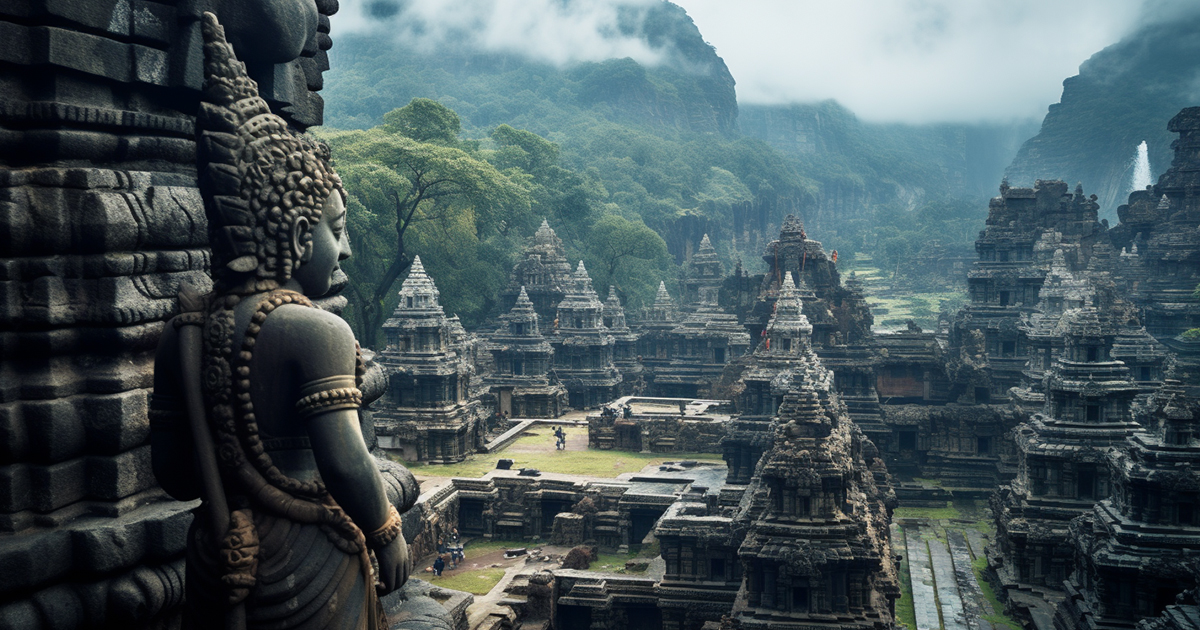Hidden in the heart of India, beneath the vigilant gaze of Ellora Caves, lies an architectural marvel that has intrigued historians and archaeologists for years. The grand Kailasa Temple, dedicated to Lord Shiva, stands as a symbol of human creativity, and perhaps even more. This article aims to explore the mysteries shrouding this incredible structure, delving into its origins and the extraordinary accomplishments tied to its creation.
The Kailasa Temple, a remarkable achievement, carved entirely from a massive monolithic rock, emerges as a towering shrine dedicated to Lord Shiva across three impressive levels. Towering over the Parthenon in Athens, it commands admiration and reverence. Scholars are amazed by the suggested timeframe for its construction – a mere 18 years.
The calculations supporting this assertion are truly remarkable: over 400,000 tons of rock extracted in less than two decades. When considering the logistics, it appears to be an impossible task even with today’s advanced technology.

Both archaeologists and engineers are puzzled, grappling with the plausibility of such rapid construction. The most perplexing aspect is the complete absence of any traces showing where the excavated rock ended up. There is no evidence of it being utilized in constructing other temples or structures in the vicinity. Could it be that the actual timeline for constructing the temple goes far beyond what has been assumed?
Exploring ancient Vedic texts reveals a mysterious apparatus known as the “bhaumasura,” described as a sophisticated machine capable of penetrating rocks and transforming them into vapor. This mechanism challenges our comprehension of ancient technologies. Is it conceivable that the bhaumasura was operational thousands of years ago? Some ancient astronaut enthusiasts suggest that this device could have played a pivotal role in shaping the temple, emerging from below rather than descending from above as conventional scholars propose.
Adding to the intrigue are the subterranean passageways beneath the Kailasa Temple. These tunnels appear to lead to unknown destinations, with local authorities sealing off access, sparking interest among researchers. One such tunnel descends vertically into the ground, leaving us to ponder its purpose. Certain ancient astronaut theorists draw parallels between these tunnels and the legends of Lord Shiva, hinting at a potential connection to an ancient underground civilization.
Could this underground city have functioned as an extraterrestrial hub pre-dating known human civilizations? The notion that these structures were crafted by beings from outside our world challenges our historical narrative. If this concept holds any truth, it would undoubtedly push the boundaries of our imagination.
Discover More in the Video:
In summary, the Kailasa Temple goes beyond mere architectural marvel; it embodies a mystery within itself. From its rapid construction timeline to the enigmatic bhaumasura device and the puzzling underground tunnels, it all contributes to its mystique. While unraveling the complete truth about the Kailasa Temple may always remain elusive, it stands as a captivating testament to the enigmas encircling our ancient past.
